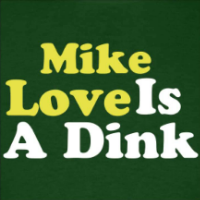#1 2014-03-17 15:44:31
- formby
- Member

- From: Wiseacre
- Posts: 8359
On Classic...
"Dressing, like painting, should have a residual stability, plus punctuation and surprise." - Richard Merkin
Souvent me Souvient
#2 2014-03-17 15:48:49
- formby
- Member

- From: Wiseacre
- Posts: 8359
Re: On Classic...
Discuss if you wish...
"Dressing, like painting, should have a residual stability, plus punctuation and surprise." - Richard Merkin
Souvent me Souvient
#5 2014-03-18 05:08:01
- adorable homunculus
- Member

- Posts: 816
Re: On Classic...
Thanks Formby, very interesting. There is a measure of the contrived within classical architecture, of course - entasis is applied.
Certainly, though, nature has favoured certain mathematical patterns, deeply embedded within a plethora of formations cf Fibonnacci, and which the human eye responds to positively.
Last edited by adorable homunculus (2014-03-18 05:14:28)
We dont need any of the clothes we buy except as a means to be the star in the film of our life populated by constructs - FNB
#6 2014-03-18 05:47:48
- 4F Hepcat
- THE Cat

- Posts: 14333
Re: On Classic...
I do like these type of manifesto/rules of art movements, the fascist aspects beside, I quite like these from the Futurists manifesto:
4. We declare that the splendor of the world has been enriched by a new beauty: the beauty of speed. A racing automobile with its bonnet adorned with great tubes like
serpents with explosive breath ... a roaring motor car which seems to run on machine-gun fire, is more beautiful than the Victory of Samothrace.
5. We want to sing the man at the wheel, the ideal axis of which crosses the earth, itself hurled along its orbit.
6. The poet must spend himself with warmth, glamour and prodigality to increase the enthusiastic fervor of the primordial elements.
You can see the modernists were rebelling against their Victorian fathers and grandfathers who were experts in the ornate. And a lot of modernist building and architecture has dated badly, all those sterile and concrete monstrosities. All those flat roofs making apartments too hot in the summer and poor at retaining the heat in winter.
This is interesting too: "'......like the hacking jacket, flannels and brogues, they actually improve with time. In fact, you get to John Ruskin’s idea that inanimate objects have a sense of spirit when start defining classics. You find yourself coming up with evaluative terms which could apply as well to a decent person as a decent design: in both what we admire is honesty, integrity, guts and good manners." Hacking jackets, flannels and brogues as utterly timeless, nay, even improving with time? From a modern urban setting there's a lot of ornate qualities and superfluous details in a hacking jackets and brogues. I would consider that several details of pockets and pattens fail the modernist Ten Commandments.
Vibe-Rations in Spectra-Sonic-Sound
#7 2014-03-18 05:53:35
- adorable homunculus
- Member

- Posts: 816
Re: On Classic...
Marinetti's writing is quite splendid:
"We will sing of great crowds excited by work, by pleasure, and by riot; we will sing of the multicolored, polyphonic tides of revolution in the modern capitals; we will sing of the vibrant nightly fervor of arsenals and shipyards blazing with violent electric moons; greedy railway stations that devour smoke-plumed serpents; factories hung on clouds by the crooked lines of their smoke; bridges that stride the rivers like giant gymnasts, flashing in the sun with a glitter of knives; adventurous steamers that sniff the horizon; deep-chested locomotives whose wheels paw the tracks like the hooves of enormous steel horses bridled by tubing; and the sleek flight of planes whose propellers chatter in the wind like banners and seem to cheer like an enthusiastic crowd."
Last edited by adorable homunculus (2014-03-18 05:53:45)
We dont need any of the clothes we buy except as a means to be the star in the film of our life populated by constructs - FNB
#8 2014-03-18 07:02:20
- Film Noir Buff
- Dandy Nightmare

- From: Devil's Island
- Posts: 9345
Re: On Classic...
Clothing is not a Parthenon.
Even classic clothes are ephemeral. And the term classic is often toted by very cheap or frightened men with regards to clothes. Nothing wrong with the concept of classic until it becomes some sort of political shield to justify the unimaginative and the judgmental (and very often, the second rate).
Now, I spend a fair amount on clothing and have no desire to see the things I get made up become obsolete but I am influenced by fashion which, by its very definition, is fleeting. That's because clothes have more than one purpose and some clothes are for the here-and-now to produce a desired effect while others are for comfort and longevity. They are both important. One must learn to dress for desired effect and accept that someone else might have done the same. At the moment, I am getting a couple of suits made up that really are my interpretation of the current mode. Ordinarily it could be said that this is somewhat expensive except that I am sure I will get the results I want in the field. That might defray the cost. Perhaps my ability to get things made up let's me ignore the list a bit? Perhaps it would be different if I could only justify or afford one or two jackets. Thus, one's appetite for clothes can influence the dedication to classics. I could never argue with the concept that the less you have to spend on clothes, the more classic one should remain.
I haven't got a problem with the check list for classic clothes in Formby's post except that it is a bit over broad. But who could argue with quality ingredients and simple cloths? These are indeed the touchstones of the gentleman's wardrobe. However when the smugness of the wearer overtakes the physical attributes of the clothes themselves have we then produced something bogus? There is after all an interaction between clothing and wearer. It is not only important what you wear but how you wear it.
#9 2014-03-18 11:14:03
- stanshall
- Member

- From: Gilligan's Island
- Posts: 12991
Re: On Classic...
"bow wow wow yippie yo yippie yay"
#10 2014-03-18 14:25:04
- Bop
- Member

- Posts: 7661
Re: On Classic...
If formby is talking about form then clothes can well be considered like the Parthenon. I think to suggest they are not is to be ignorant to the governing principles of form. There is strict objectivity concerning the mathematics of form. When someone has this instinctively we call them a great designer or artistic genius.
When we talk about clothes away from their form though. And we talk about meanings and emotions then we enter a more advanced and difficult area that science does not so obviously rule. In this area we have to become more subjective. Or can asthetics and their mathematics communicate emotion through their symbolism?
#12 2014-03-18 23:16:06
- carpu65
- Member

- Posts: 1502
Re: On Classic...
Not boxy nor skinny,no big lapels nor slim lapels,no big padded shoulders or baggy pants. Proportionate to human figure,cut with good taste.
In a word: "Classic".
#13 2014-03-19 01:29:37
- 4F Hepcat
- THE Cat

- Posts: 14333
Re: On Classic...
"Classic" and yet, when the zoot suits were in, they were likely viewed as not classic at all.
Vibe-Rations in Spectra-Sonic-Sound
#14 2014-03-19 02:40:06
- Bop
- Member

- Posts: 7661
Re: On Classic...
I think that's where we get this misunderstanding of classic design. When you adhere to design priciples it doesnt mean you cant make narrow or wide structures. Whether it be buildings or clothes. It just means it's attributes have to be in proportion. Proportion is just relationship of points.And classic proportion would be those points adhering to pi.
#15 2014-03-19 02:59:31
- Moose Maclennan
- Ivy Inspiration
- From: Hernando's Hideaway
- Posts: 4577
Re: On Classic...
Whether or not yer brogues and hacking coat will still look classic in the year 4500 is an interesting question.
I'd put the span of most 'classic' clothing nearer to 3 generations, and that number might not be wholly coincidental.
#16 2014-03-19 06:20:24
- Worried Man
- Member

- From: Davebrubeckistan
- Posts: 15988
Re: On Classic...
^
Is that a pi joke?
"We close our sto' at a reasonable hour because we figure anybody who would want one of our suits has got time to stroll over here in the daytime." - VP of George Muse Clothing, Atlanta, 1955
#17 2014-03-19 06:41:54
- Moose Maclennan
- Ivy Inspiration
- From: Hernando's Hideaway
- Posts: 4577
Re: On Classic...
What kind of nerd do think I am?
Wait, don't answer that.
I was fairly serious. Who walks around in 1920s, 1930 or 1940s getup - shoes and hats excepted perhaps - and is still 'timelessly classic'?
#18 2014-03-19 06:45:28
- NJS
- Member
- Posts: 2358
Re: On Classic...
Isn't a point about the 'vintage' look that, to be credible, we should look as though we belong to our own time and not look as though we have stepped out of a sepia-tinted photograph dated 1934?
#19 2014-03-19 07:21:06
- Worried Man
- Member

- From: Davebrubeckistan
- Posts: 15988
Re: On Classic...
^
In this current age of anything goes, mishmash, draw from this draw from that fashion, is it really so bad to dress like you're from the 1930s? I mean, why should anyone criticize, other than for the fact that it looks like it's from a specific era? The outfit may be anachronistic, but I'd rather see a guy wearing a well fitting suit that's obviously from the 1930s than most of the garbage I see people wearing. Isn't it better and more pleasing than say someone wearing a t-shirt with eagle skulls on it and some camouflage pants and filthy boots or something? And while I could understand why a bunch of guys in hip hop saggy pants and over-sized t-shirts may crowd around the poor chap in his 1930s suit and hat and jeer and poke fun, I'd maybe even be tempted to join in, I'd then have to stand back and say in his defense, "Well, he's actually dressed far better than you clowns."
"We close our sto' at a reasonable hour because we figure anybody who would want one of our suits has got time to stroll over here in the daytime." - VP of George Muse Clothing, Atlanta, 1955
